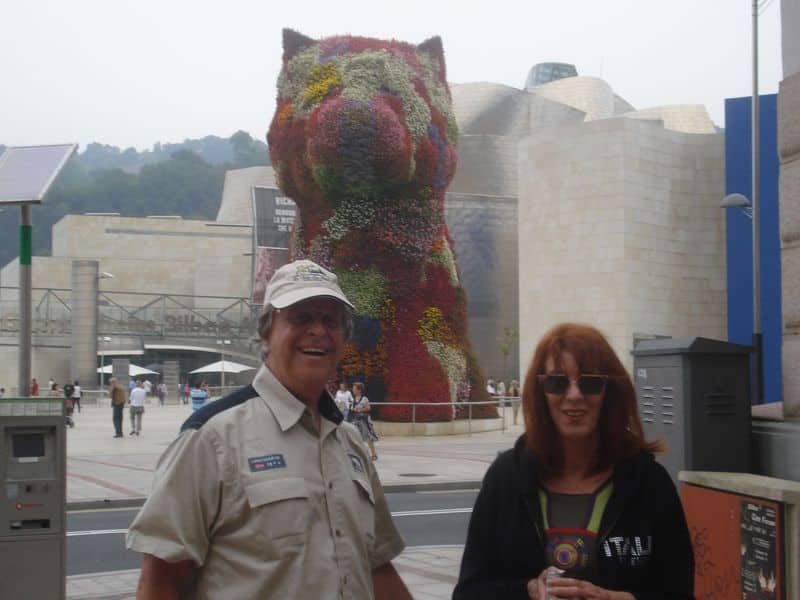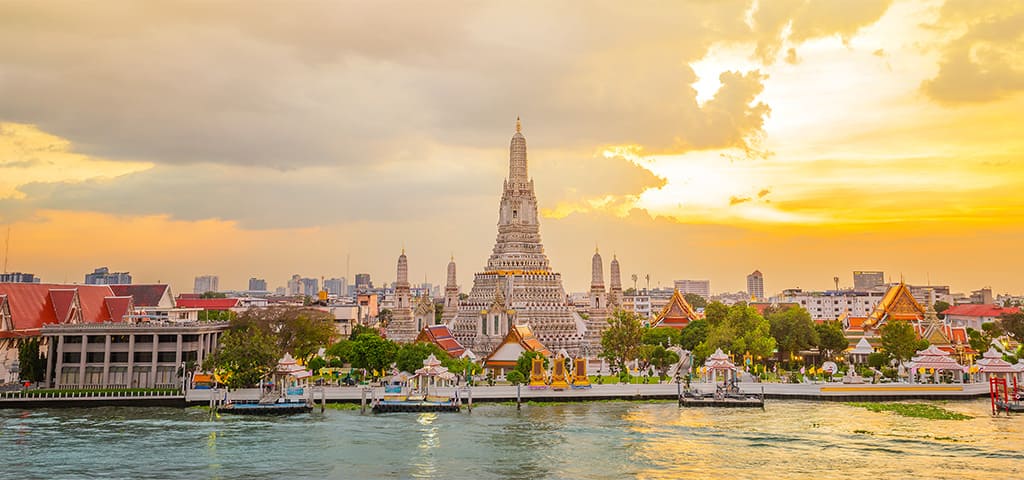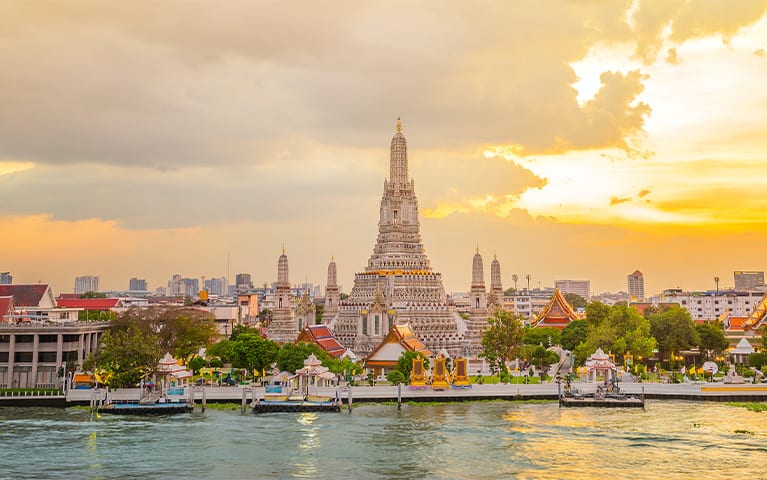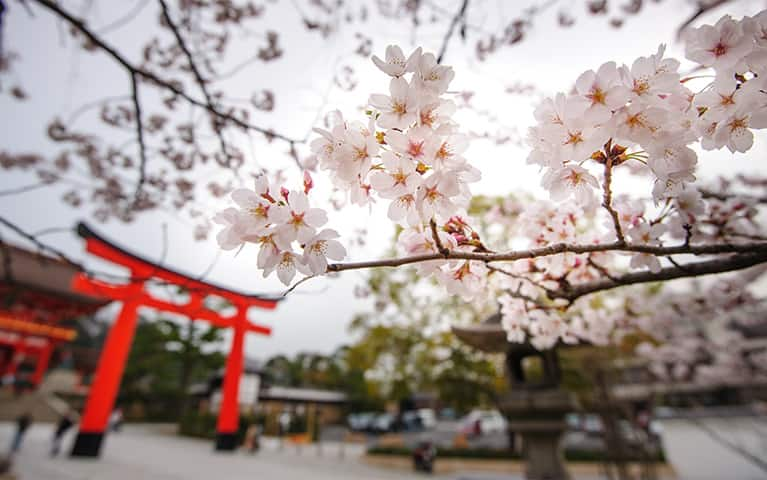Read More
A Modern Marvel in a Historical City: The Guggenheim Museum in Bilbao
http://www.facebook.com/widgets/like.php?href=http://wwww.facebook.com/OceaniaCruises

As Blogger-at-Large for Oceania Cruises, I was privileged to travel onboard Regatta with the Oceania Club Reunion Cruise for the past two weeks. I dined like a queen, was pampered in the spa, made many new friends, and collected countless stories to share with you here on the blog. I thought I would start with one of the fascinating destinations along our Western Mediterranean itinerary. While I greatly enjoyed each and every port, I had especially been looking forward to seeing Bilbao, Spain, and its Guggenheim Museum. I was not disappointed.

As I wanted to make the most of my time in Bilbao, I joined one of Oceania Cruises' Excursions. As we debarked the ship, our charming tour guide, Peter, welcomed us to our motorcoach for the short drive to the city's center. You may be thinking, the name Peter doesn't sound very Spanish, and you would be correct. Peter is actually German, but his wife is Basque, and he has lived in the region for more than 20 years. He is quite fond of the northern region of Spain and the disciplined, hardworking Basque people whose attitudes and mentality he describes as similar to the Germans. He is pleased that cultural phenomena such as the Guggenheim have drawn astute tourists to the area, and he is happy to let those who want to lie on a beach visit the south of Spain. We can tell right away that Peter has an endearing personality, a great sense of humor, and a firm grasp on the English language.

We begin with a walking tour of the Old Town and a bit of history to get us oriented. Bilbao is both a modern and historical city in the Basque region of Spain, about ten miles up the Nervion River from the Bay of Biscay. (Note the modern sculpture in front of the Baroque architecture of City Hall pictured above.) While villages were beginning to appear on the shores of the river centuries earlier, the city was officially founded in 1300 by Don Diego Lopez, and its government charter brought with it many rights and privileges that led to the city’s rapid growth. Bilbao experienced a period of decline in the 17th and 18th centuries, but the demand for iron ore led to renewed growth in the 19th century, and Bilbao became a strong industrial center.

The Old Town was severely damaged by flood in 1983. The water level reached the ceiling of the first floor of the Arriaga Theatre (pictured above), which required extensive renovations. Bilbao has since reinvented itself as a center for tourism and services. With an ambitious plan for urban development, the city created a transportation infrastructure that included an international airport, a subway system designed by Sir Norman Foster, and a footbridge across the Nervion by Santiago Calatrava. To secure a renowned cultural center for the city, the Basque government courted the Guggenheim Foundation and offered to foot the cost for the construction of the Guggenheim Museum in Bilbao, which was completed in October 1997 for a cost of over $100 million.

Peter confessed that he was originally opposed to the expense and the idea of the museum in Bilbao, but happily admits his error in judgment. The museum has invigorated Bilbao, inspired pride in its citizens, and of course brought millions of tourists to the city.

Regatta guests David and Anne Joffe are pictured above with Jeff Koons' floral sculpture of a West Highland terrier that welcomes visitors to the Guggenheim. Once a traveling exhibit, it is now part of the museum's permanent collection, as the Bilbao citizenry grew quite attached to the aptly named Puppy.

The museum building itself is a work of art both inside and out, a fascinating amalgam of different spaces, forms, and materials. Everywhere you look the eye is infatuated. Frank Gehry of course designed the museum, and according to Peter, his design was chosen over other competing architects because it best integrated the city with the river that has always been its core and lifeline. The exterior surface is covered in titanium plates, chosen on the one hand because they are guaranteed to resist corrosion for 100 years, but primarily because they resemble the scales of a fish, a motif of which Gehry is quite fond and which likewise links the city to the river.


Pictured above: Tulips by Jeff Koons
When people hear the term "modern art," their reactions run the gamut from utter fascination to "pshaw." Before you determine which way you lean, I encourage you to visit the Guggenheim in Bilbao and to see it with an experienced guide. David was our guide inside the museum, and it is hard to say which were more valuable - his insights or his encouragement of us to discover our own.
The currently featured collection is by Anish Kapoor, creator of Chicago’s famous “Bean” - a nickname that indicates the work's accessibility and also the city’s affection for the giant, reflective orb in Millennium Park. Cloud Gate (the actual name of the piece) is an equally appropriate title that touches on the beauty and power that likewise define Kapoor’s art. Part of Kapoor’s brilliance is his ability to take what appear to be simple forms and elevate them to the sublime, using the interaction of light, color, presence and context to engage the onlooker in a way that creates a personal experience.
 Shooting into the Corner. As part of this provocative piece by Kapoor, a man periodically emerges to load the cannon and fire a cartridge of red wax into the corner wall.
Shooting into the Corner. As part of this provocative piece by Kapoor, a man periodically emerges to load the cannon and fire a cartridge of red wax into the corner wall.
While Kapoor's work can be quite dramatic as above, it is often much more subtle. Forget all of the artsy babble and consider Kapoor’s work Yellow, in which he paints a single shade of yellow in the shape of a huge square with a concave center that actually sinks into the wall. From a distance the shading created by the concavity inspires a vision of the sun’s warmth. Only as you get closer do you realize the work is three-dimensional. Western artists for centuries have been using color in two-dimensions to create the illusion of depth, but Kapoor uses color and depth to create the illusion of two dimensions. And all of Kapoor’s works evolve with each step you take toward or away from them, so that your own consciousness is always part of the artwork itself. While in classical art, you often have to know the story of the artist or the history of the work to understand it, modern art is more often about experience and perspective, so that to appreciate it, you may only have to know your own mind.

I haven’t even touched on the permanent collection by Richard Serra, which began with the construction of the enormous, undulating steel structure known as Snake, which so anchored the Guggenheim’s largest gallery that seven more pieces were commissioned to join it and named collectively The Matter of Time. Serra's work invites you in to explore. You may get lost, if you're lucky.


You can also see Warhol and Rauschenberg and other modern masters, but if words or photos could do justice to these works, you wouldn’t need to visit the museum. While I am obviously a fan, I realize each of us has our own taste in art. So rest assured that Bilbao has a Museum of Fine Arts featuring an extensive classical arts collection, and the city also offers many charms beyond the realm of the creative arts. If you’re at all intrigued, both Marina and Insignia will visit Bilbao as part of their Western Mediterranean itineraries in May 2011.
Share
http://static.ak.fbcdn.net/connect.php/js/FB.Share












